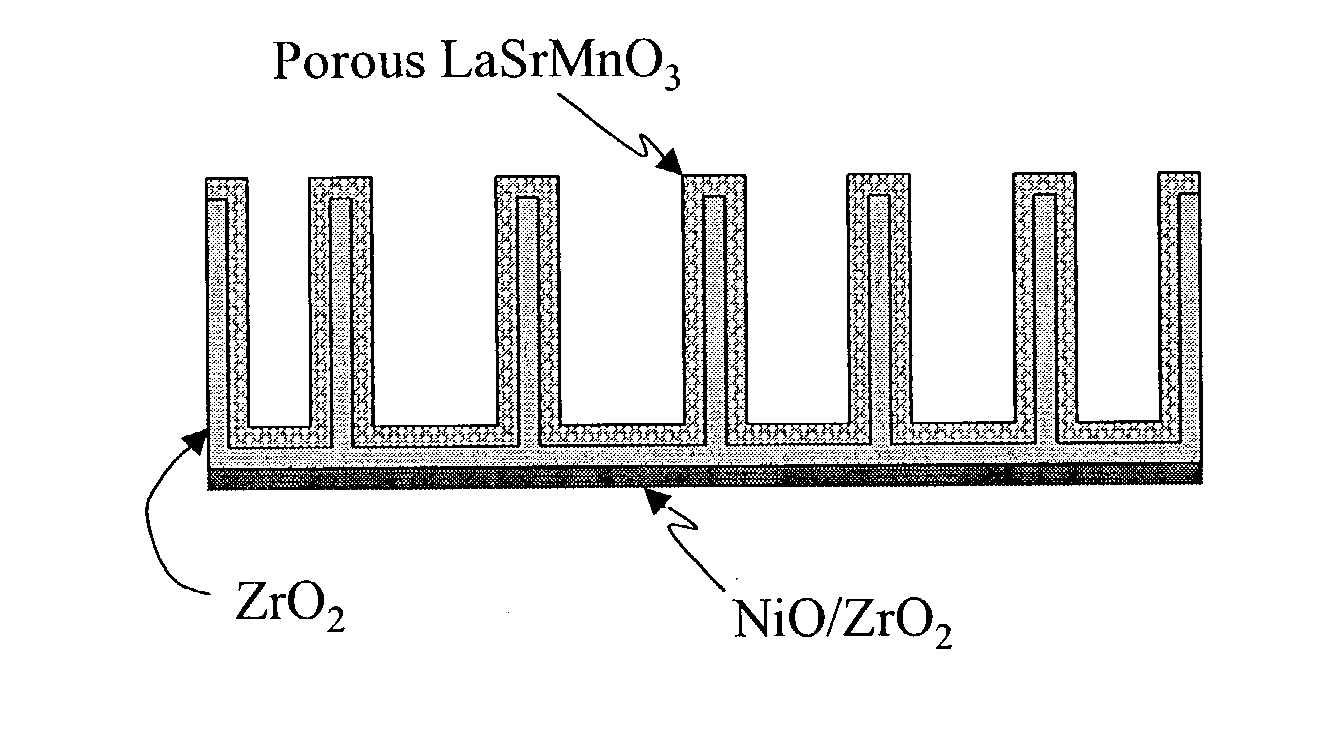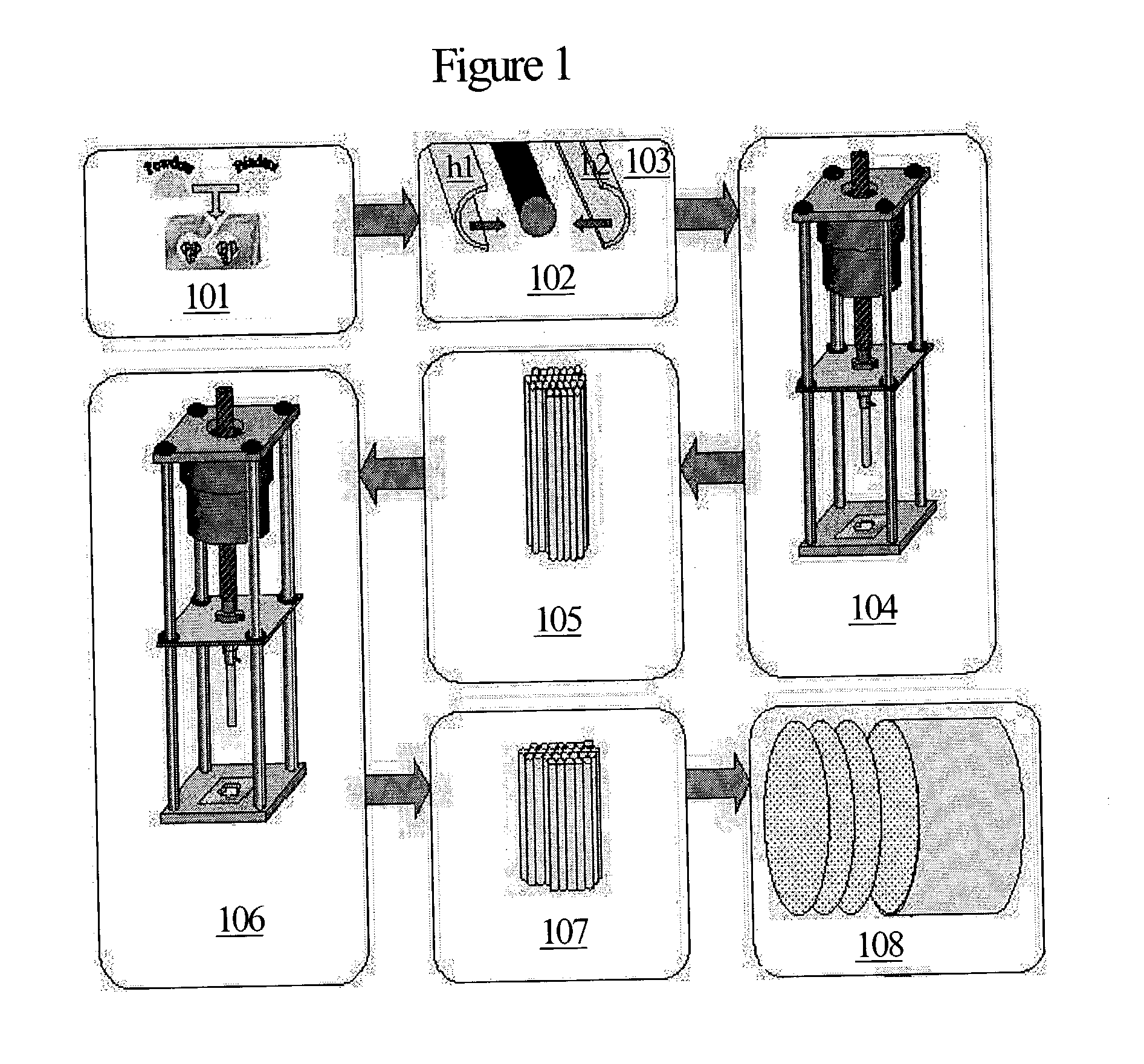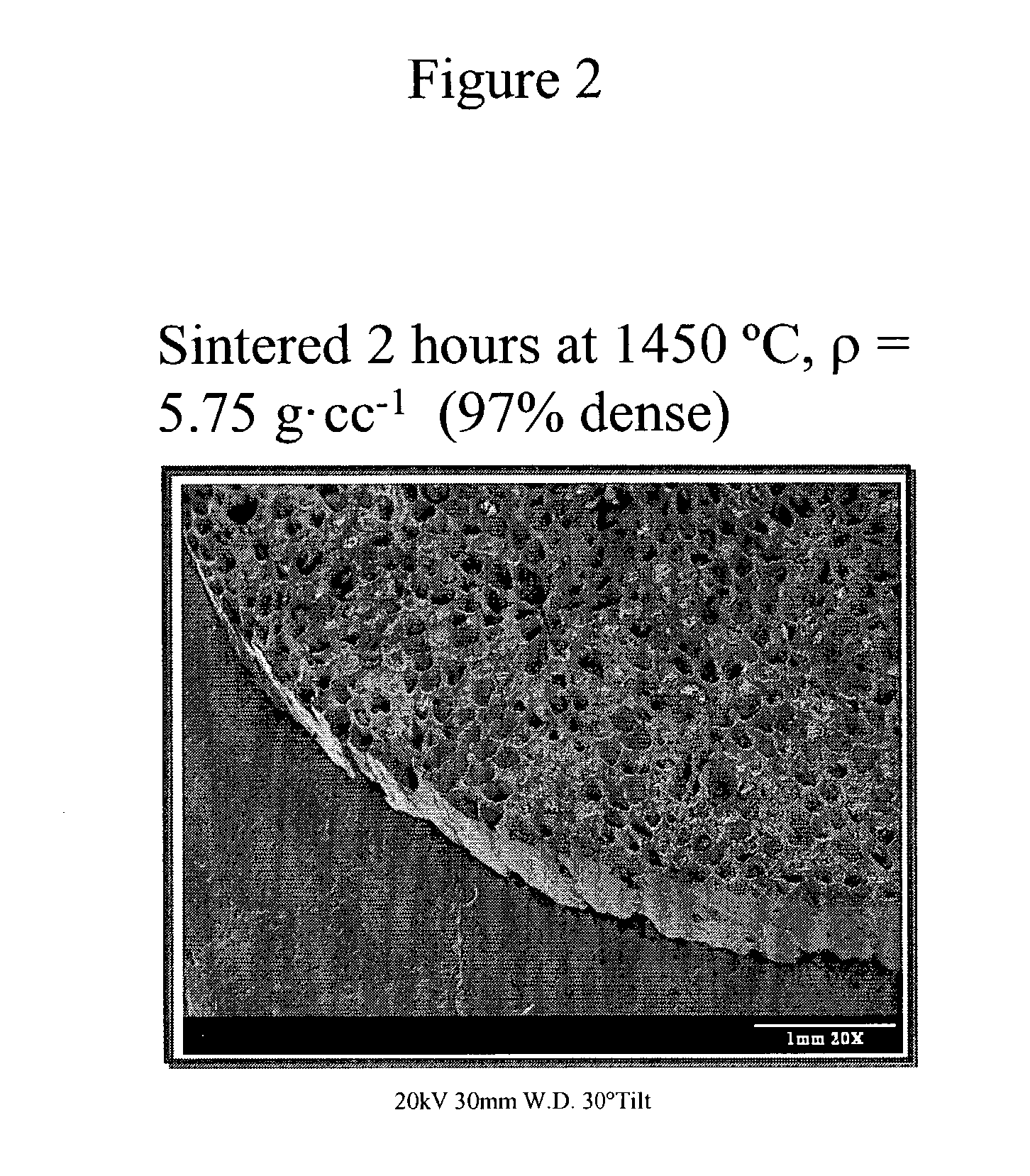Solid oxide fuel cell and method for preparing the same
a fuel cell and solid oxide technology, applied in the direction of cell components, final product manufacturing, sustainable manufacturing/processing, etc., can solve the problems of reducing the mechanical tolerance of the structure, reducing efficiency and potential, and single cell thermodynamic limitations
- Summary
- Abstract
- Description
- Claims
- Application Information
AI Technical Summary
Benefits of technology
Problems solved by technology
Method used
Image
Examples
example 1
Example Embodiment of the Method of the Present Invention
[0035] A batch of graphite-loaded polymer was pressed to form a solid rod of 15.5 mm diameter using a 5 ton ram press at a load of 2000 pounds and 150.degree. C. Half shells of 3.25 mm thick polymer similarly loaded with zirconia were produced by pressing the zirconia-laden material in dies at 120.degree. C. and 5000 pounds. The zirconia shells were laminated to the core rod and extruded through a 2 mm spinneret to produce a filament with a .about.1.5 mm carbon loaded core. The filament was cut to an arbitrary length and re-bundled to produce a 22 mm feedrod containing .about.80 cores of carbon surrounded by an interpenetrating matrix of zirconia loaded polymer. This feedrod was extruded through a 2 mm spinneret. The diameter of the carbon loaded material was then reduced to .about.150 .mu.m. These filaments were bundled together to produce a cylindrical block that was sliced into 1.5 mm thick disks.
[0036] A tape cast layer of...
example 2
Example Embodiment of the Method of the Present Invention
[0037] A batch of graphite-loaded polymer was pressed into a solid rod of 15.5 mm diameter. A 3.25 mm thick shell of polymer similarly loaded with ZrO2 was clad to the core rod. After extrusion through a 1 mm spinneret, a filament was produced with a .about.700 .mu.m carbon loaded core. The filament was cut to an arbitrary length and re-bundled to produce a 22 mm feedrod containing .about.480 cores of carbon surrounded by an interpenetrating matrix of ZrO2 loaded polymer. This feedrod was extruded through a 600 .mu.m spinneret. The diameter of the carbon loaded material was then reduced to .about.19 .mu.m. These filaments were bundled together to produce a cylindrical block that was sliced into 0.5 mm thick disks.
[0038] A tape cast layer of ZrO2 was laminated to the surface of the block to serve as the electrolyte. After firing, a disk was produced containing a dense zirconia substrate with a dense electrolyte layer and a cont...
PUM
| Property | Measurement | Unit |
|---|---|---|
| volume % | aaaaa | aaaaa |
| volume % | aaaaa | aaaaa |
| thick | aaaaa | aaaaa |
Abstract
Description
Claims
Application Information
 Login to View More
Login to View More - R&D
- Intellectual Property
- Life Sciences
- Materials
- Tech Scout
- Unparalleled Data Quality
- Higher Quality Content
- 60% Fewer Hallucinations
Browse by: Latest US Patents, China's latest patents, Technical Efficacy Thesaurus, Application Domain, Technology Topic, Popular Technical Reports.
© 2025 PatSnap. All rights reserved.Legal|Privacy policy|Modern Slavery Act Transparency Statement|Sitemap|About US| Contact US: help@patsnap.com



